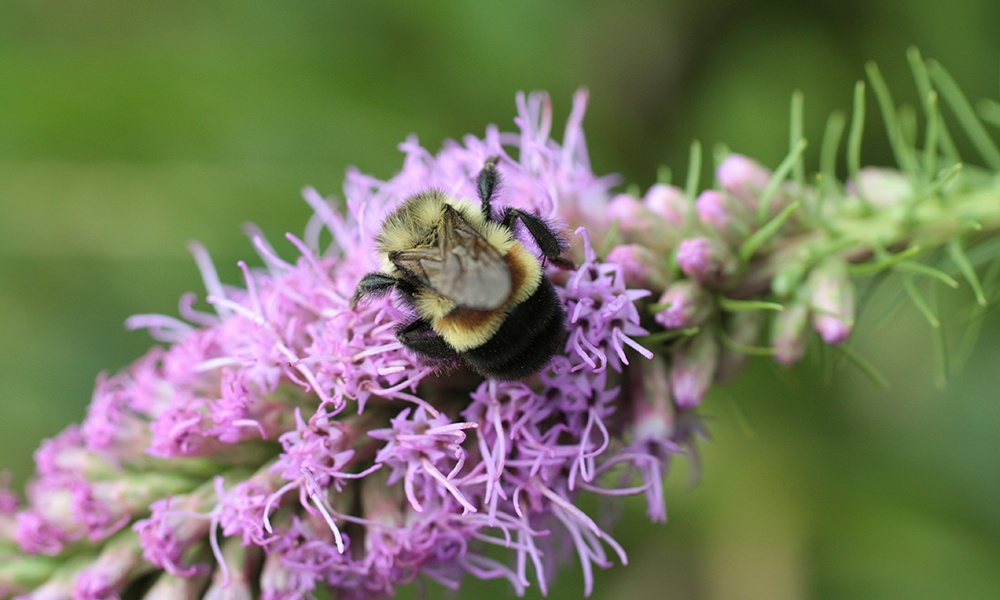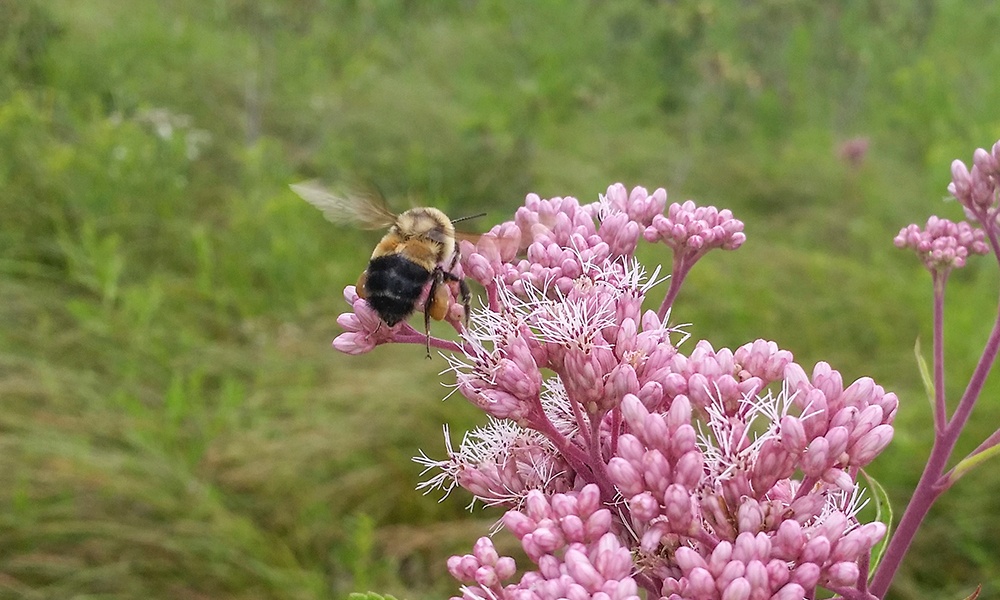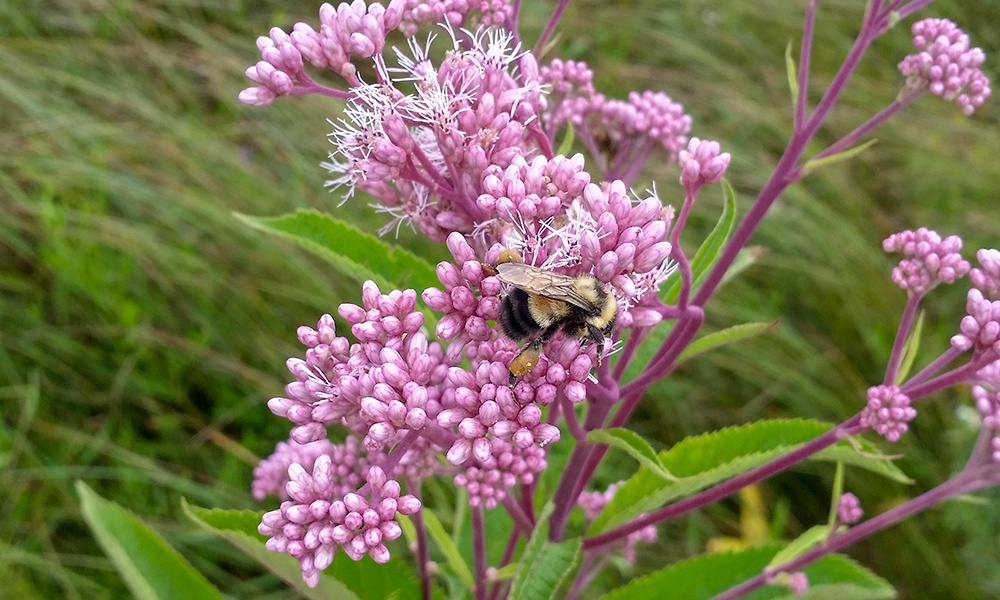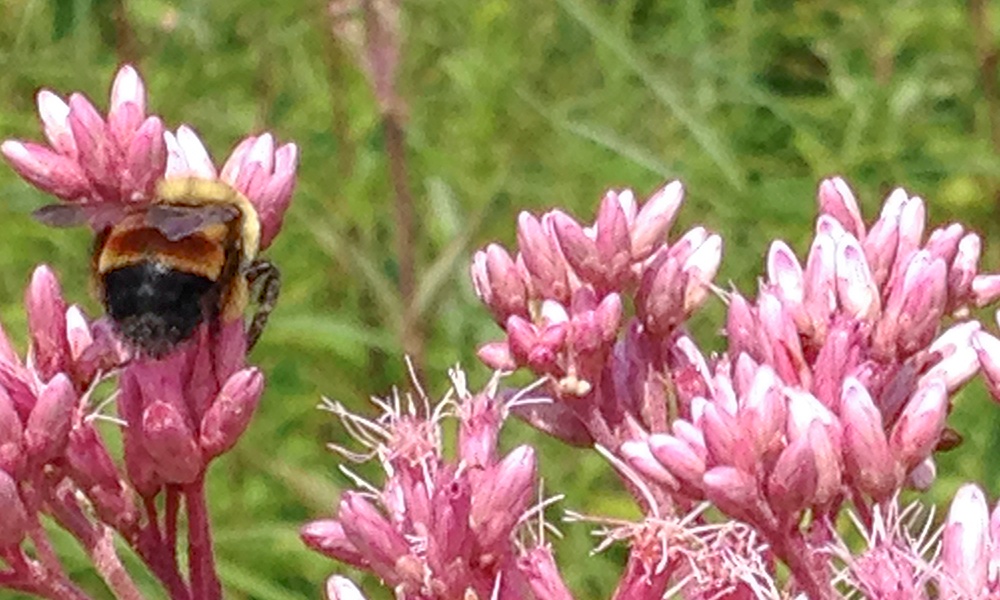
I think it’s just human nature to run in the opposite direction when we see a big black-and-yellow insect flying our way. But when it comes to the rusty patched bumble bee, our reaction to this federally endangered species should lean more toward excitement and compassion.
Most of us don’t stick around long enough to take a close look at that black-and-yellow insect flying by us, but the rusty patched bumble bee is pretty distinctive if you’re lucky enough to see one. Like other bumble bees, it’s black, yellow and fuzzy looking. It’s also pretty big, falling somewhere between the size of other common bumble bees and large carpenter bees. What’s most unique about this species is the rust-colored patch on the abdomen of its workers. Unlike other bees that may have a similar rusty or brown patch, on rusty patched bumble bees this patch is completely surrounded by yellow hairs.

This native species of bee needs our help, and it needs it pretty bad. Current estimates are that the range of this bee has declined to about 0.1% of its former range, and the population has declined to about 13% of what it used to be. What’s most shocking is that this has occurred in about the past 20 years – a very short period of time. Unfortunately, the cause of the decline isn’t just due to one factor, but consists of a “rogues gallery” of common issues facing many other species: habitat loss, habitat degradation and pesticide use have all played a role in the abrupt decline of this species.
Given the range decline and how scarce the bee has become, we are lucky to be in DuPage County, as the Midwest is currently the "hot spot" of rusty patched activity, giving us a better chance than most of seeing one of these rare beauties. Chicago and its suburbs in particular have a high proportion of rusty patched sightings, including around homes, in gardens and in our local forest preserves. Since the first District observation of the species in 1982, we’ve seen it at 7 different preserves spread throughout the county. In fact, 2018 was sort of a banner year for the species, as we observed 7 bees in 4 different preserves – both the highest number of bees and preserves on record for the District. What’s interesting is that these sightings didn’t only occur in high-quality ‘remnant’ or large preserves, but also in some of our smaller preserves, urban areas and even a parking lot!

As exciting as 2018 was for rusty patched sightings, the species still needs our help. The good news is that the species is considered a ‘generalist,’ meaning it feeds on a wide variety of flowering plants, so we can help the species in our own backyards and gardens. You can help support the species’ recovery by planting native flowering plants around your home and yard. These bees need a nectar source from early spring until early fall, so having a mix of early- and late-blooming flowers ensures they have a stable source of food throughout the year. You can also reduce or eliminate your use of pesticides, particularly neonicotinoid-based products, in your yard. Not only does this mean not spraying your plants with these chemicals, but also checking to make sure that the seeds and plugs you’re planting haven’t already been treated with neonicotinoids.
By taking small steps like these, some day we may be lucky enough to spot a rusty patched bumble bee sipping on nectar from a flower in our forest preserve or garden.

Andres Ortega
